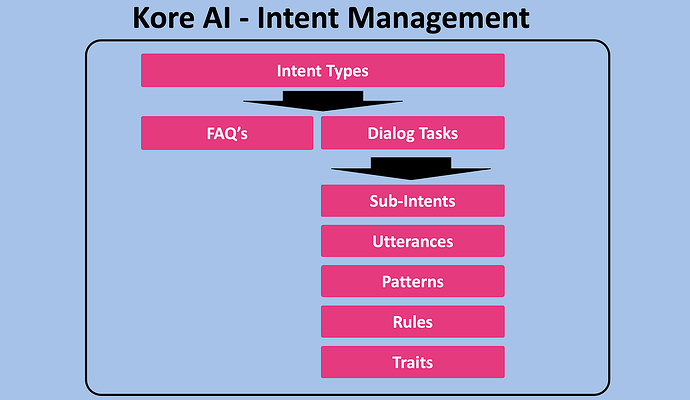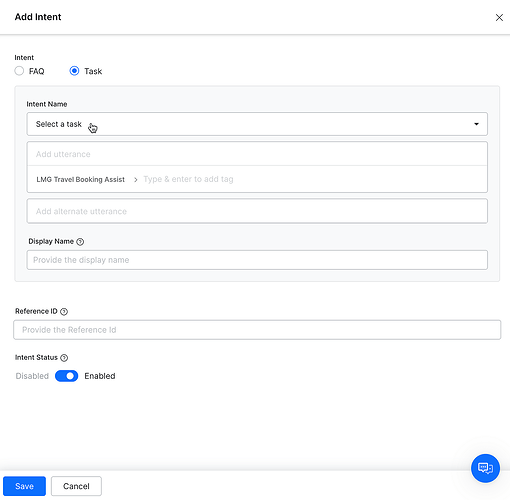Kore AI’s Innovative Approach To Intent Creation & Management
Considering the Gartner Magic Quadrant for Enterprise Conversational AI Platforms, Kore AI is amongst the leaders.
Kore AI has arguably the best balanced platform between Ability to Executeand Completeness of Vision.
Kore AI is also the co-leader with IBM on Completeness of Vision, and second to Amelia only in Ability to Execute.
Kore AI Intent Types
Kore AI has two intent types which users can define:
 FAQ Intents
FAQ Intents
 Task Intents
Task Intents
 FAQ Intents
FAQ Intents
The basic premise is that a FAQ intent is not associated with any dialog or flow nodes.
Intent utterance examples are used to train the intent; these utterances are different ways a user might answer a question. The bot response is defined within a standard or advanced mode and responses can be tailored according to the channel in use.
As seen below, FAQ intents can also be switched on or off, which is quite useful for emergency alerts and the like.
 Task Intents
Task Intents
Task intents are intents which are associated with a specific flow sequence. These flow sequences are referred to as tasks; in turn tasks can be pieced together or rather concatenated to create a larger flow. This approach of having sections of a flow as a task is analogous to a function which can be repurposed across an organisation.
Below is the window to define a Task Intent…
fo
Intent Attributes
In keeping with the trend amongst the Gartner leaders, Kore AI has added structure to intents. As seen below, apart from the normal utterances which are used to train the NLU model, patterns, negative patterns, traits and rules can be added as attributes of an intent.
 Sub-Intents
Sub-Intents
Sub-intents or nested intents is a feature which is also implemented by a few other platforms. Nested intents allow for the introduction of complexity in intents and improved management.
Why I like this approach, is the fact that intents are being introduced as a more advanced and complex data taxonomy. Enabling branching into related intents from a primary intent.
 Traits
Traits
In theory, the idea behind traits is that a user utterance might not directly address a specific intent. However, there might be traits in the user utterance which can be used to advance the conversation.
Kore AI highlights the following example, a user utterance might be:
My flight is late and I will miss my connection
This user utterance contains two traits: flight delay and emergency. In this scenario, the utterance does not convey any direct intent. However, the presence of the emergency trait can be used to assign the conversation to a human agent.
 Follow-Up Intents
Follow-Up Intents
…a user can be presented with a list of identified follow-up intents, follow-up intents are useful to further train and refine dialog flows.
 Patterns
Patterns
The principle of patterns is a collection of pattern syntaxes, along with examples, that can be configured for intent detection. Read more here.
 Negative Patterns
Negative Patterns
Negative Patterns can be used to eliminate intents detected in the presence of a phrase. This will help filter the matched intents for false positives.
 Rules
Rules
Define intent identification rules to trigger this intent. You may use traits or context tags to define these rules
In Closing
Kore AI has a wealth of functionality and a multitude of avenues to achieve Conversational AI objectives…as seen above, the different affordances available to decompose the building process of a digital assistant contributes to improved scaleability.





